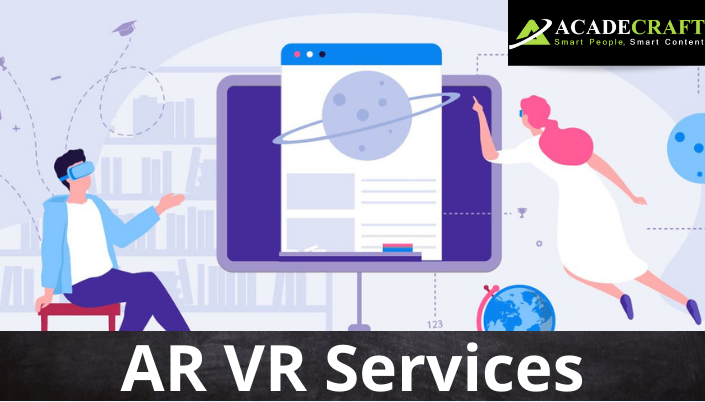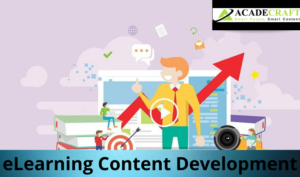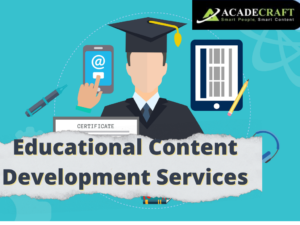Today, immersive technologies AR (Augmented Reality) and VR (Virtual Reality) are hot topics. Not just retail sectors, even the education industry, are also getting matured by immersing themselves in AR and VR. The fact shows, education sector ranks 4th worldwide in terms of VR investment. More facts? The market of AR VR in education is predicted to cross $19.6 billion by 2023 by 2023. Thus, the education industry worldwide opts for AR VR Services providers.
Why these technologies? After all, it is replacing conventional educational tools like chalk, blackboards and others. These overwhelming technologies are now replaced by AR VR headsets and other immersive tools for interactive learning. Want to know how it transformed the education sector? Let us decipher.
How AR VR Solutions Transformed Education Sector
No doubt, immersive technologies AR and VR have the potential to elevate the learning experience. That is not the end of the story. Keep an eye on this post to know interactive ways how it transformed the education sector.
- Virtual field trips
What say about expeditions and trips? We know that the pandemic crisis is not yet over. But the foremost and inexpensive solution to provide trip enjoyment to learners is AR VR. Every virtual field trip is possible with this AR VR by walking in jungles, amusement parks, or offering educational trips.
How to make it possible? Provide AR VR headsets to learners and allow them to explore the world sitting in one place. By the end of 2022, the sales of AR VR glasses will reach $22.8 million. Hopefully, your educational institution is also contributing to this sales percentage. Virtual trips through VR have a knowledge retention rate of 75%, which is far ahead of trips through a conventional medium (50%).
- Special education
AR VR solutions are accessible that help learners with disabilities in exploring the learning content. How? Putting a VR headset is a great option. Also, both these immersive technologies boost motivation, build cognitive skills and enhance the interactivity level of learners. What for disabled learners? On the one hand, AR improves their vocabulary skills through gamification. And VR removes their social anxiety through 3D images, scenario-based learning and multimedia content.
Thus, educational institutions outsource an AR VR development company to receive accessible AR VR learning solutions. Professionally curated solutions work for attention deficit hyperactivity disorder (ADHD), physically disabled, dyslexic learners.
- AR VR training
Now, statistics speak that 26% of businesses worldwide use AR VR training. Why so? It is because it reduces the occurrence of injuries by 43%. Does not it sound good for a sophisticated domain like manufacturing or technical training? It is not about the gaming and entertainment sector that uses AR VR services.
In 2021, a market report shows the disruption of a few sectors by the use of immersive technologies. We are mentioning these sectors because education, on a lighter note, is associated with underlying sectors:
- 38% in the healthcare sector
- 28% in the education sector
- 19% in the automotive sector
- 21% in manufacturing
- 15% retail eCommerce sector
- 13% of military and defense
In addition, investments in commercial, educational training by 2024 will reach $4.1 billion, followed by retail showcasing ($2.7 billion) and industrial maintenance ($4.1 billion).
- Classroom learning
In a survey, it was found that there is an increase of 8.8% in learning through AR VR solutions. It is because computer-generated graphics and interactive solutions elevate the learning experience. So, what is the conclusion? It is that when clients use these immersive technologies for classroom learning, it enhances knowledge retention.
Virtual 3D spaces in classroom learning are an effective medium to impart quality knowledge. Why not create an immersive learning world for learners? If it is a technical task for your institution, collaborate with AR VR services providers to make the development task easy. In a 2018 survey of 350 educational institutions worldwide, 28% of them have partially deployed VR solutions while 18% have deployed them completely.
- VR Research
Next, the impact of these immersive technologies is limited to classroom learning and training, but it is also influencing research activities. To support this statement, we have a fact:
Fact File: Savannah College of Art and Design in 2015 used this phenomenon to conduct research. They distributed AR VR headsets to 30,000 students to unfold different segments of this booming technology.
- Admission process
As mentioned above, AR VR immersive technologies bridge the virtual and physical world in virtual trips. But that is not the end of the story. Even these technologies help boost students’ admission process. Want facts? A survey shows that 40% of admission officers investigate learners’ profiles through social media and offer virtual institutions’ trips.
A VR package is an efficient, affordable, and interactive solution which provides a 360-degree view of campus. Also, per headset cost of VR is $100-$200, which is less compared to the accommodation of visitors visiting the campus.







